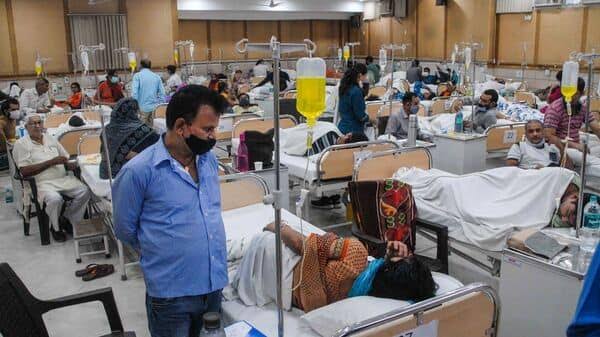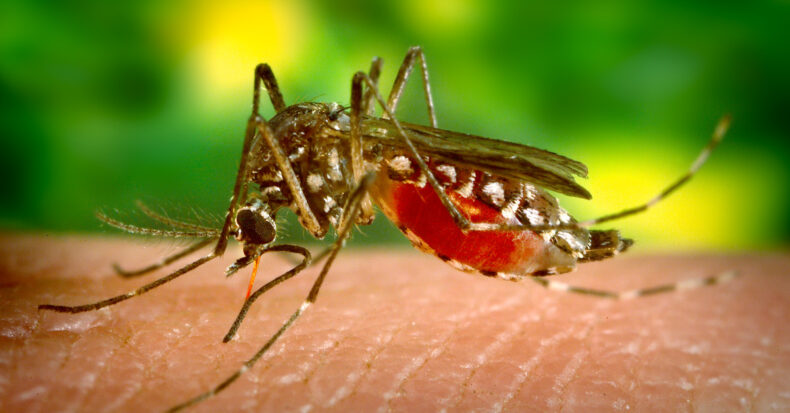Delhi has reported the highest number of dengue cases in the past five years, with 187 cases recorded till July 22. Health authorities are taking measures to combat this viral infection, which becomes more prevalent during the monsoon and post-monsoon seasons due to increased mosquito breeding. Early detection and preventive measures are crucial in managing and treating dengue effectively.
Early Signs and Symptoms of Dengue
Dengue, a viral infection transmitted by Aedes mosquitoes, presents with various early signs and symptoms. Dr. Santosh Kumar Aggarwal, Sr Consultant – Internal Medicine at Marengo Asia Hospitals, Faridabad, highlights the common indicators, which include sudden high fever, severe headache, pain behind the eyes, joint and muscle pain, nausea, vomiting, skin rash, mild bleeding, and fatigue. The most noticeable symptom is the sudden onset of high fever, often reaching 104°F (40°C) or even higher.
Recognizing Dengue-Associated Headache and Bone Breaking Fever
A prominent symptom of dengue is an intense headache, often feeling like pain and discomfort behind the eyes, especially during eye movement. The disease is often referred to as “breakbone fever” due to the severe muscle and joint pain it causes. This pain is accompanied by nausea, vomiting, and stomach uneasiness. Other signs of infection include mild skin rash, mild bleeding from the nose or gums, significant fatigue, and weakness that hampers daily activities. It’s essential to remember that these symptoms can be associated with other illnesses as well, so seeking prompt medical attention, especially in dengue-prone areas, is crucial for early diagnosis and appropriate management to prevent complications and facilitate a faster recovery.
Preventive Measures for Dengue Control
With the increasing number of dengue cases, adopting preventive measures is crucial. Use insect repellent and wear clothes with long sleeves and long pants to reduce mosquito bites. If your surroundings have a high mosquito presence or cases of dengue have been reported nearby, follow mosquito control methods. Avoid letting water accumulate in tires, buckets, planters, toys, pools, birdbaths, flowerpots, or garbage containers, as these can become breeding sites for mosquitoes.
Dengue Cases on the Rise in Delhi: An Alarming Situation

Delhi, the national capital of India, is facing a concerning surge in dengue cases. As of July 22, a total of 187 dengue cases have been reported, marking the highest number in the past five years. This alarming trend has health authorities on high alert, taking proactive measures to tackle this viral infection effectively. Dengue is transmitted primarily by the Aedes mosquito, making India, particularly during the monsoon and post-monsoon seasons, a hotbed for its spread.
Delhi’s Preparedness to Combat Dengue
In response to the escalating dengue cases, Delhi’s health authorities have initiated a preparedness plan. The Health Department and DIP have been instructed to launch campaigns in schools and among the general public to create awareness about dengue and its prevention. Hospitals are gearing up to handle dengue cases efficiently, ensuring that medical facilities are ready to cater to those in need of care. Collaboration with the Municipal Corporation of Delhi (MCD) is also underway to strengthen the response.
Early Detection: The Key to Effective Management
Early detection plays a critical role in managing and treating dengue effectively. By recognizing the early signs and symptoms, individuals can seek timely medical attention, preventing complications and facilitating a faster recovery. The common signs of dengue include sudden high fever, severe headache, pain behind the eyes, joint and muscle pain, nausea, vomiting, skin rash, mild bleeding, and fatigue. Dengue fever can lead to temperatures reaching 104°F (40°C) or even higher, a notable indicator of the infection.
Dengue-Associated Headache and Bone Breaking Fever
One of the hallmark symptoms of dengue is an intense headache, which often feels like pain and discomfort behind the eyes, particularly during eye movement. This unique headache, along with severe muscle and joint pain, has earned dengue the nickname “breakbone fever.” The pain is accompanied by nausea, vomiting, and stomach uneasiness, impacting daily activities. In some cases, mild bleeding from the nose or gums may also occur.
Preventive Measures: The First Line of Defense
Preventing dengue is crucial, and simple preventive measures can significantly reduce the risk of mosquito bites and subsequent infections. Using insect repellents, wearing clothes with long sleeves and long pants, and adopting mosquito control methods are effective preventive steps. It’s essential to eliminate any potential breeding sites for mosquitoes by ensuring that water does not accumulate in tires, buckets, planters, toys, pools, birdbaths, flowerpots, or garbage containers.
Conclusion
The rising dengue cases in Delhi warrant immediate attention and action. By recognizing the early signs and symptoms of dengue, seeking prompt medical attention, and adopting preventive measures, individuals and communities can contribute to curbing the spread of this viral infection. Health authorities’ preparedness and public cooperation are crucial in managing the current situation and preventing further outbreaks. In this collective effort, early detection, preventive actions, and public awareness will play a vital role in safeguarding public health and creating a safer environment for everyone in Delhi and beyond.













